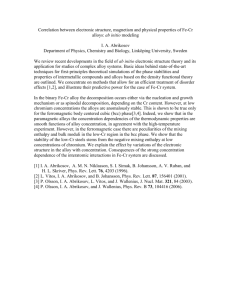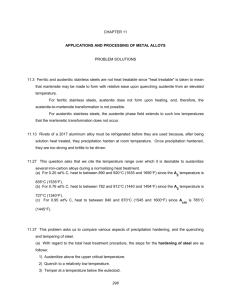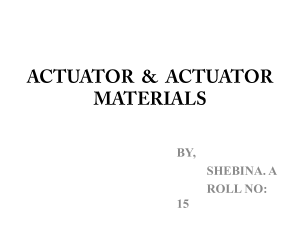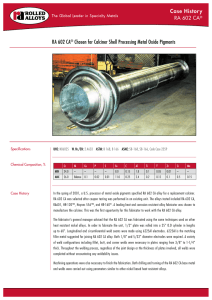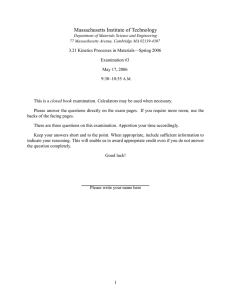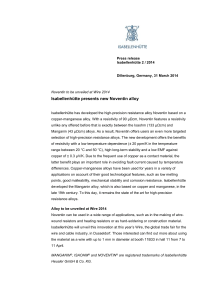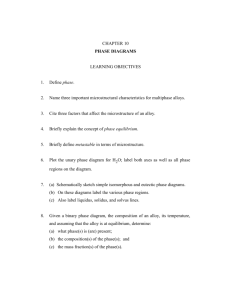Crystal structure and microstructure of Ni 50 Mn 38 Sb 12
advertisement
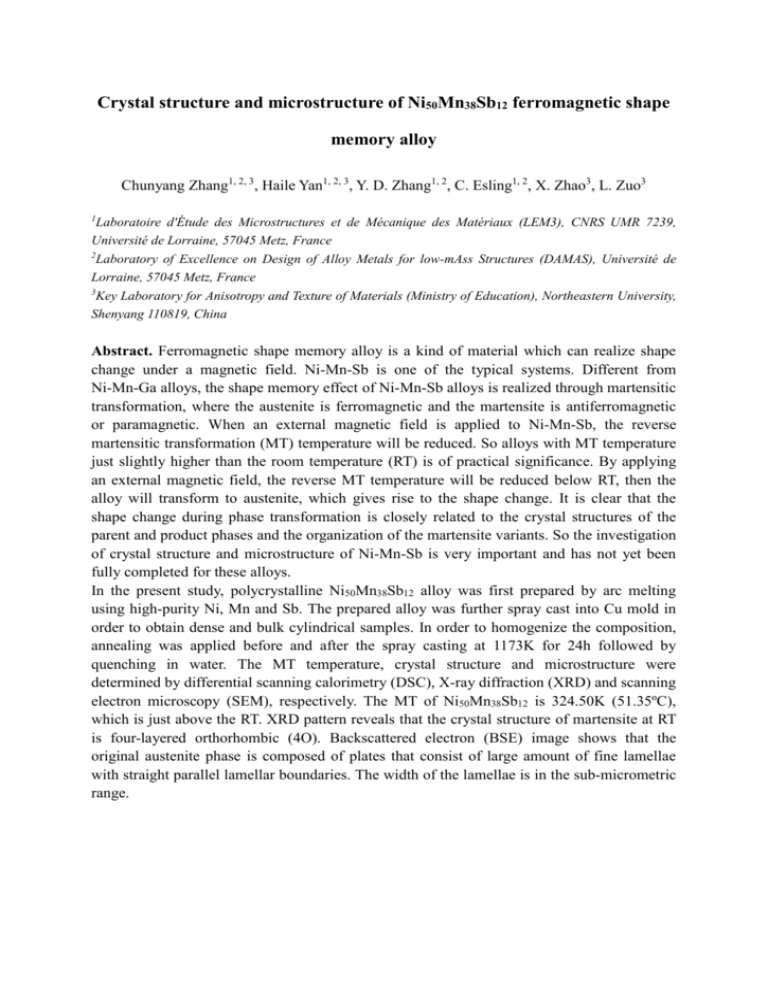
Crystal structure and microstructure of Ni50Mn38Sb12 ferromagnetic shape memory alloy Chunyang Zhang1, 2, 3, Haile Yan1, 2, 3, Y. D. Zhang1, 2, C. Esling1, 2, X. Zhao3, L. Zuo3 1 Laboratoire d'Étude des Microstructures et de Mécanique des Matériaux (LEM3), CNRS UMR 7239, Université de Lorraine, 57045 Metz, France 2 Laboratory of Excellence on Design of Alloy Metals for low-mAss Structures (DAMAS), Université de Lorraine, 57045 Metz, France 3 Key Laboratory for Anisotropy and Texture of Materials (Ministry of Education), Northeastern University, Shenyang 110819, China Abstract. Ferromagnetic shape memory alloy is a kind of material which can realize shape change under a magnetic field. Ni-Mn-Sb is one of the typical systems. Different from Ni-Mn-Ga alloys, the shape memory effect of Ni-Mn-Sb alloys is realized through martensitic transformation, where the austenite is ferromagnetic and the martensite is antiferromagnetic or paramagnetic. When an external magnetic field is applied to Ni-Mn-Sb, the reverse martensitic transformation (MT) temperature will be reduced. So alloys with MT temperature just slightly higher than the room temperature (RT) is of practical significance. By applying an external magnetic field, the reverse MT temperature will be reduced below RT, then the alloy will transform to austenite, which gives rise to the shape change. It is clear that the shape change during phase transformation is closely related to the crystal structures of the parent and product phases and the organization of the martensite variants. So the investigation of crystal structure and microstructure of Ni-Mn-Sb is very important and has not yet been fully completed for these alloys. In the present study, polycrystalline Ni50Mn38Sb12 alloy was first prepared by arc melting using high-purity Ni, Mn and Sb. The prepared alloy was further spray cast into Cu mold in order to obtain dense and bulk cylindrical samples. In order to homogenize the composition, annealing was applied before and after the spray casting at 1173K for 24h followed by quenching in water. The MT temperature, crystal structure and microstructure were determined by differential scanning calorimetry (DSC), X-ray diffraction (XRD) and scanning electron microscopy (SEM), respectively. The MT of Ni50Mn38Sb12 is 324.50K (51.35ºC), which is just above the RT. XRD pattern reveals that the crystal structure of martensite at RT is four-layered orthorhombic (4O). Backscattered electron (BSE) image shows that the original austenite phase is composed of plates that consist of large amount of fine lamellae with straight parallel lamellar boundaries. The width of the lamellae is in the sub-micrometric range.



